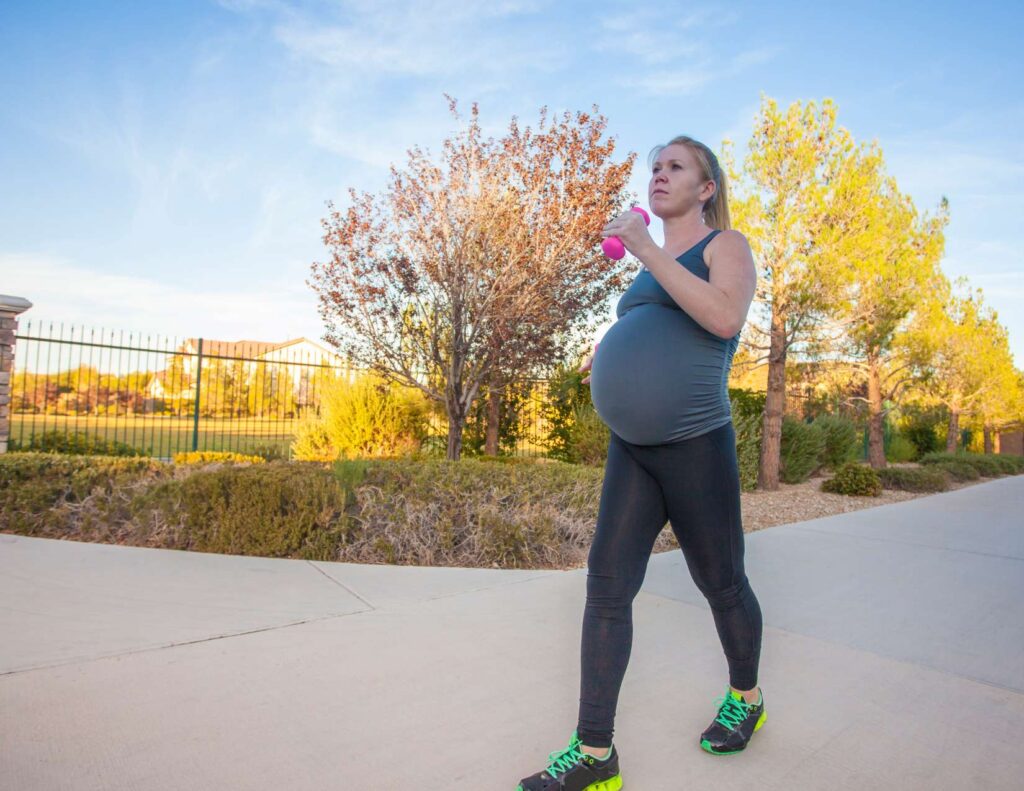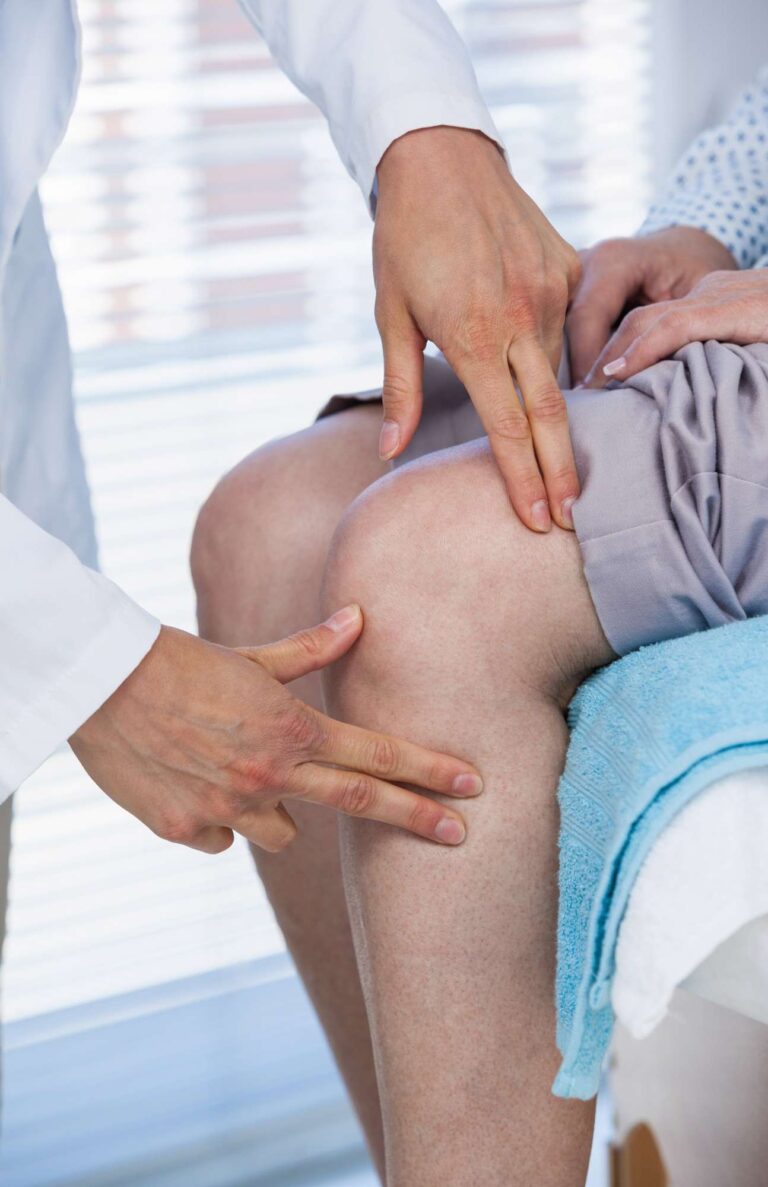The Best Symphysis Pubis Dysfunction Exercises
If you’re one of the many women who have experienced Symphysis Pubis Dysfunction (SPD) during pregnancy, you know how debilitating it can be. This condition is caused by the loosening and misalignment of the pelvic joints, which can lead to severe pain and discomfort when walking, standing, or even sitting. Fortunately, there are exercises that can help alleviate some of the symptoms of SPD and improve your overall mobility.
In this article, we’ll cover some of the most effective Symphysis Pubis Dysfunction Exercises, including stretches, strengthening moves, and pelvic floor exercises. Whether you’re currently dealing with SPD or looking for ways to prevent it in future pregnancies, these exercises can help you feel stronger, more comfortable, and more confident in your body. So let’s dive in and explore the world of SPD exercises!

Table of Contents
What is Symphysis Pubis Dysfunction (SPD)?
Symphysis Pubis Dysfunction (SPD) is a type of condition that causes pain in the pelvic area during pregnancy. It occurs when the ligaments that hold the pelvic bones together become too relaxed, leading to instability and discomfort. The pain can range from mild to severe and may be felt in the pubic bone area or around the hips and lower back. SPD can also make it difficult to sleep, walk, or stand for long periods. While it is a common condition during pregnancy, it can still be challenging to deal with.
Benefits of exercises for SPD
Exercises can provide many benefits for women with Symphysis Pubis Dysfunction during pregnancy. Here are some of the benefits:
Reduced pain
Strengthening the muscles of the pelvic floor, hips, and core can help stabilize the pelvis and reduce pain.
Improved posture
Exercises can improve posture, which can alleviate pressure on the pelvic area.
Better circulation
Exercises can improve circulation, which can reduce inflammation and promote healing.
Increased strength and flexibility
Exercises can improve strength and flexibility, which can make daily activities like walking and standing more comfortable.
Precautions before starting SPD exercises
Before starting any exercise program, it is essential to consult with your doctor or midwife. They can advise you on what exercises are safe for you and your baby and provide you with any necessary modifications. Additionally, it is crucial to listen to your body and not push yourself too hard. If an exercise feels uncomfortable or painful, stop immediately. Avoid exercises that involve jumping, sudden movements, or intense twisting, as they can aggravate SPD symptoms.

Pelvic floor exercises for SPD
Pelvic floor exercises can be particularly helpful for women with Symphysis Pubis Dysfunction during pregnancy. Here are some pelvic floor exercises to try:
- Kegels: Squeeze the muscles around your vagina and anus as if you are trying to stop the flow of urine. Hold for a few seconds, then release. Repeat 10-15 times.
- Pelvic tilt: Lie on your back with your knees bent and feet flat on the ground. Inhale and then exhale as you tilt your pelvis upward, pressing your lower back into the floor. Hold for a few seconds, then release. Repeat 10-15 times.
Hip strengthening exercises for SPD
Hip strengthening exercises can help improve stability and reduce pain in the pelvic area. Here are some hip strengthening exercises to try:
- Clamshell: Lie on your side with your legs bent at a 90-degree angle. Keeping your feet together, lift your top knee as high as you can without moving your pelvis. Hold for a few seconds, then release. Repeat 10-15 times on each side.
- Squats: Stand with your feet shoulder-width apart and your toes pointing slightly outward. Inhale and then exhale as you bend your knees and lower your hips as if you are sitting in a chair. Keep your back straight and your weight in your heels. Hold for a few seconds, then release. Repeat 10-15 times. CAUTION: Skip this one if you’re experiencing severe pain.

Core exercises for SPD
Core exercises can help strengthen the muscles of the lower back and abdomen, which can improve stability and reduce pain in the pelvic area. Here are some core exercises to try:
- Bridge pose: Lie on your back with your knees bent and feet flat on the ground. Inhale and then exhale as you lift your hips upward, keeping your feet and shoulders on the ground. Hold for a few seconds, then release. Repeat 10-15 times.
- Plank: Get into a push-up position, but instead of bending your arms, hold your body straight for as long as you can. Hold for a few seconds, then release. Repeat 10-15 times.
Stretching exercises for SPD
Stretching exercises can help relieve tension and reduce pain in the pelvic area. Here are some stretching exercises to try:
- Seated butterfly stretch: Sit on the floor with the soles of your feet touching. Gently press your knees down toward the floor. Hold for a few seconds, then release. Repeat 10-15 times.
- Pigeon pose: Start on all fours, then bring your right knee forward and place it behind your right wrist. Straighten your left leg behind you. Hold for a few seconds, then release. Repeat on the other side.

Yoga poses for SPD
Yoga can be an effective way to manage SPD pain during pregnancy. Here are some yoga poses to try:
- Cat-cow: Get on your hands and knees and alternate between arching your back and rounding it. Repeat 10-15 times.
- Child’s pose: Kneel on the floor with your big toes touching and your knees wide apart. Lower your hips back toward your heels and stretch your arms forward. Hold for a few seconds, then release. Repeat 10-15 times.
5 Best exercises for Symphysis Pubis Dysfunction
Pelvic tilt
The pelvic tilt is an exercise that can help strengthen the muscles of the lower back and hips and improve posture. To do a pelvic tilt, lie on your back with your knees bent and feet flat on the ground. Inhale and then exhale as you tilt your pelvis upward, pressing your lower back into the floor. Hold for a few seconds, then release. Repeat 10-15 times.
Kegels
Kegels are exercises that can help strengthen the pelvic floor muscles, which can help support the weight of the uterus and reduce pain in the pelvic area. To do Kegels, squeeze the muscles around your vagina and anus as if you are trying to stop the flow of urine. Hold for a few seconds, then release. Repeat 10-15 times.
Clamshell
The clamshell is an exercise that can help strengthen the muscles of the hips and improve stability. To do a clamshell, lie on your side with your legs bent at a 90-degree angle. Keeping your feet together, lift your top knee as high as you can without moving your pelvis. Hold for a few seconds, then release. Repeat 10-15 times on each side.
Bridge pose
The bridge pose is an exercise that can help strengthen the muscles of the lower back, hips, and thighs and improve posture. To do a bridge pose, lie on your back with your knees bent and feet flat on the ground. Inhale and then exhale as you lift your hips upward, keeping your feet and shoulders on the ground. Hold for a few seconds, then release. Repeat 10-15 times.
Squats
Squats are exercises that can help strengthen the muscles of the hips, thighs, and core and improve posture. To do a squat, stand with your feet shoulder-width apart and your toes pointing slightly outward. Inhale and then exhale as you bend your knees and lower your hips as if you are sitting in a chair. Keep your back straight and your weight in your heels. Hold for a few seconds, then release. Repeat 10-15 times.

Sample SPD exercise plan
Here is a sample exercise plan that you can do to manage SPD pain during pregnancy:
- Pelvic tilt: 10-15 repetitions
- Kegels: 10-15 repetitions
- Clamshell: 10-15 repetitions on each side
- Bridge pose: 10-15 repetitions
- Squats: 10-15 repetitions
Do this exercise plan once a day, or as advised by your doctor or midwife. You can also modify the exercises or add more reps as your pregnancy progresses.
Tips for making SPD exercises more effective
To make these Symphysis Pubis Dysfunction exercises more effective, here are some tips to keep in mind:
Focus on proper form
Make sure you are doing each exercise correctly to get the most benefit and avoid injury.
Use props
You can use props like a yoga block or a resistance band to make exercises more challenging.
Take breaks
If you feel tired or uncomfortable during an exercise, take a break and rest.
Stay hydrated
Drink plenty of water before, during, and after exercise to stay hydrated.

Other ways to manage SPD pain
In addition to exercises and treatments, there are other ways you can manage SPD pain during pregnancy. Here are some options:
Use heat or cold therapy
Applying heat or cold to the pelvic area can help reduce inflammation and relieve pain.
Wear comfortable shoes
Wearing comfortable shoes throughout pregnancy with good support can help reduce pressure on the pelvic area.
Avoid standing or sitting for long periods
Try to take breaks and move around frequently to avoid putting too much pressure on the pelvic area.
Tips for Incorporating SPD Exercises into Daily Life
Incorporating Symphysis Pubis Dysfunction exercises into your daily life can be a great way to manage your symptoms and make your pregnancy more comfortable. Here are some tips to help you get started:
Set a routine and schedule it in
Try to do your exercises at the same time each day to make them a habit.
Use reminders
Set a reminder on your phone or computer to help you remember to do your exercises.
Make it fun
Play your favorite music or do your exercises with a friend to make them more enjoyable.
Be patient
Results may not come immediately, so be patient and keep up with your exercises.
Remember to listen to your body and consult with your doctor or midwife before starting any exercise program. With the right care and treatment, you can manage SPD pain and have a more comfortable pregnancy.
Other Symphysis Pubis Dysfunction Treatment
In addition to Symphysis Pubis Dysfunction exercises, there are other treatments you can try to manage SPD pain during pregnancy. Here are some options:
Chiropractic care
A chiropractor during pregnancy can help realign the pelvis and reduce pain.
Physical therapy
A physical therapist can help you with exercises and stretches to manage SPD pain.
Support belts
A support belt can help support the weight of the uterus and reduce pressure on the pelvic area.
Rest
Taking breaks and resting can help reduce pain and discomfort.

Symphysis Pubis Dysfunction Long-Term Effects
Long-term effects of Symphysis Pubis Dysfunction (SPD) may include persistent instability and pelvic girdle pain, difficulty walking or sitting for extended periods of time, and difficulty with activities such as exercising or sexual intercourse. One study about Predictors and consequences of long-term pregnancy-related pelvic girdle pain found that, “One of 10 women with PGP in pregnancy has severe consequences up to 11 years later.”
Additionally, an individual with SPD can have psychological issues stemming from the chronic pain. Stress can cause sciatica, SPD and other chronic pain which can lead to disruption to their daily life. In some cases, individuals with SPD may require mental therapy, physical therapy or even surgery to address the symptoms.
Why do some women experience pubic symphysis pain not pregnant?
Pubic symphysis pain is a type of pelvic girdle pain (PGP) that can affect some women even if they are not pregnant. This type of pain is typically caused by the misalignment or instability of the pubic symphysis. PGP can be caused by activities that involve excessive strain on the pelvis, such as heavy lifting or running, and can also be attributed to hormonal changes associated with the menstrual cycle and/or menopause.
Does walking help pubic symphysis?
Yes, walking can help improve pubic symphysis. Walking is a low-impact exercise that can help strengthen the muscles around your pelvic area and reduce tension in the area which often times leads to decreased pain associated with pubic symphysis. Additionally, it helps to improve circulation which can also aid in reducing soreness and inflammation.
What triggers symphysis pubis dysfunction?
SPD is a condition that can be caused by pregnancy, childbirth, trauma, and pelvic floor weakness. Pregnancy hormones are thought to loosen the ligaments between the two halves of the pelvis, causing SPD. During childbirth, further stretching or tearing of these ligaments may occur which can cause pain and discomfort. In some cases, trauma to the lower back or pelvis can cause SPD. Finally, weak pelvic floor muscles can lead to instability in the pelvis and contribute to SPD pain. Women who have had multiple pregnancies are more likely to experience this condition than women who have never been pregnant.
How do you self adjust pubic symphysis?
Self adjusting pubic symphysis can be achieved through a few simple steps:
First, you should find a quiet place where you can relax and concentrate. Take some slow deep breaths to help alleviate any stress or tension in your body.
Next, gently press the area of discomfort with your fingers for several seconds. As you keep the pressure on the area, take some more deep breaths.
After a few moments you should begin to feel some relief as the pubic symphysis adjusts itself. You may also want to massage the area in a circular motion or apply heat or ice to aid in relaxation.
If needed, repeat this process several times until you experience relief from your discomfort.
Can I squat with SPD?
Yes, you can squat with SPD. However, it’s important to make sure that you’re doing the exercise correctly to avoid further damage or injury. Make sure to keep your feet firmly planted on the ground and don’t let your ankles roll outwards. Your knees should be tracking over your toes as you lower down, instead of allowing them to cave inwards. Additionally, make sure you’re engaging your core and glutes as you squat, and use a steady, controlled motion when coming up from the bottom position of the exercise. If you experience any pain or discomfort during or after the exercise, stop immediately.
Conclusion
Symphysis Pubis Dysfunction can be a challenging condition to deal with during pregnancy, but there are many exercises and treatments you can try to manage your symptoms. Symphysis Pubis Dysfunction exercises can be an effective way to strengthen the muscles of the pelvic floor, hips, and core, which can help stabilize the pelvis and reduce pain. Additionally, other treatments like chiropractic care and support belts can also be helpful. Remember to consult with your doctor or midwife before starting any exercise program and listen to your body to avoid injury. With the right treatment and care, you can manage SPD pain and have a more comfortable pregnancy.







